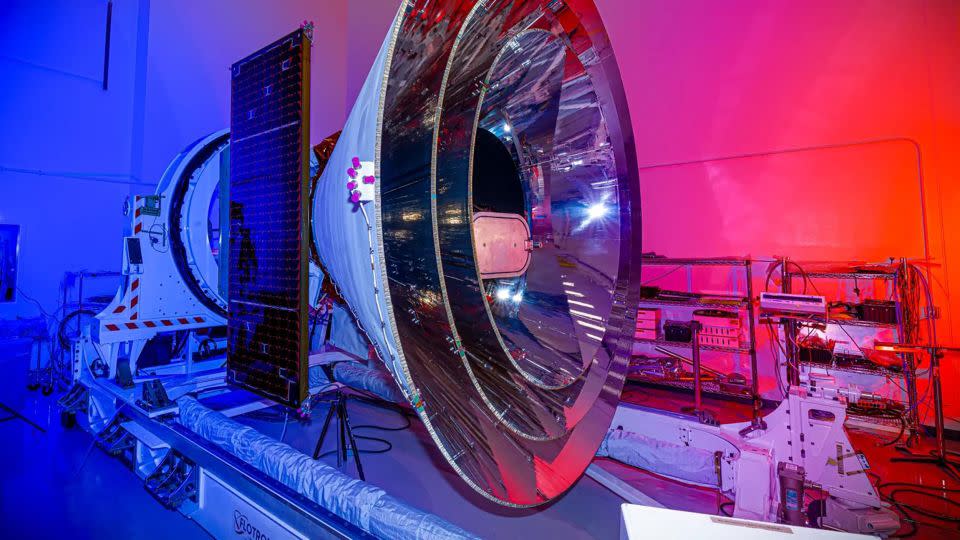NASA’s two-for-one launch of its newest space telescope, SPHEREx — designed to seek out the key ingredients for life in the Milky Way — alongside a sun-focused mission called PUNCH is facing another delay.
Both missions were expected to lift off together aboard a SpaceX Falcon 9 rocket at 11:10 p.m. ET (8:10 PT) Monday from Vandenberg Space Force Base in California. But weather conditions were only 20% favorable for a launch, and mission teams from NASA and SpaceX decided to stand down from the attempt, the space agency said.
There are opportunities to take off available through April, and NASA and SpaceX will share a new date when conditions have improved.
The launch window originally opened on February 28. But weather and a series of integration issues cropped up as engineers attached both missions to the rocket and encapsulated them within a protective faring, which delayed the proceedings, said Julianna Scheiman, director of NASA Science Missions at SpaceX. NASA and SpaceX also scrubbed a launch attempt Saturday night to “allow teams to continue rocket checkouts ahead of liftoff,” according to the agency.
Although the missions have entirely different goals, launching PUNCH as a secondary rideshare along with SPHEREx helps get “more science into space for less cost,” said Dr. Nicky Fox, associate administrator for NASA’s Science Mission Directorate. And it helps that the missions are going to a similar place: a sun-synchronous orbit around Earth’s poles, meaning each spacecraft keeps the same orientation relative to the sun throughout the year.
SPHEREx, or the Spectro-Photometer for the History of the Universe, Epoch of Reionization and Ices Explorer, aims to shed light on how the universe has evolved and find where life’s key ingredients originated in the cosmos.
PUNCH, or Polarimeter to Unify the Corona and Heliosphere, will study how the sun affects the solar system. The mission will observe the sun’s hot outer atmosphere, called the corona, and study solar wind, or the energized particles that emerge in a steady stream from the sun.
Both groundbreaking missions promise to reveal previously unseen and unknown aspects of our solar system and galaxy.
“These missions cover the full breadth of the science that NASA does every day,” said Dr. Mark Clampin, acting deputy associate administrator of NASA’s Science Mission Directorate. “PUNCH … will study the sun in great detail, whereas SPHEREx is a survey mission that will scan the full sky and will observe hundreds of millions of stars. So every minute of the day, NASA science missions are exploring the universe at different scales to really help us understand the universe we live in and understand the sun that keeps our planet alive.”
After launching, SPHEREx will spend just over two years orbiting Earth from 404 miles (650 kilometers) overhead, collecting data on more than 450 million galaxies. The telescope also will survey more than 100 million stars in our galaxy.
Mapping the distribution of the galaxies will help scientists to understand a cosmic phenomenon called inflation, or what sparked the universe to increase in size by a trillion-trillionfold nearly instantaneously after the big bang.
The observatory will create a map of the sky in 102 colors of infrared light, which is invisible to the human eye and ideal for studying stars and galaxies. The telescope will split infrared light into individual wavelengths, like a prism. The different colors of light can help scientists uncover the composition of celestial objects by isolating their chemical compounds.


